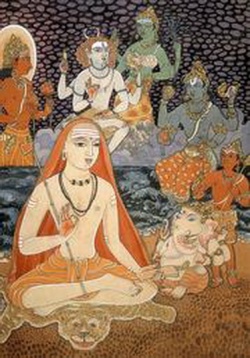Yoga
yoga
瑜伽 (Skt, Pali; Jpn yuga ) Yoga is a word in Pali and Sanskrit meaning ‘to connect’ or ‘to bind’ and is etymologically related to the English word yoke. In Buddhism yoga is sometimes used as an alternative word for meditation.
An important step in meditation training is to learn to develop concentration, i.e. to fix the attention on one point. For most people however, the word ‘yoga’ is associated with the ancient system of physical and mental exercises commonly called hatha yoga. Although a Hindu art, anyone doing Buddhist meditation will find that yoga benefits their practice. Hatha yoga enhances good health, it can be a type of mindfulness of the body and it can invigorate the body after extended periods of meditation.
Yoga is also a Pali term for 'yokes, bonds,' being another name for the 4 fermentations; see asava. In ancient India yoga postures were used for meditation for attaining to formless absorptions such as the jhanas. The Buddha took this a step further, realizing the Dhamma through Insight, Vipassana meditation.
Outside India, the term yoga is typically associated with Hatha Yoga and its asanas (postures) or as a form of exercise. Someone who practices yoga or follows the yoga philosophy is called a Yogi. In many nations now yoga studios have sprouted up for people to come and learn the postures and exercises for better mental and physical health, often with little or no underlying philosophy / religion attached to it.
A system of meditation with roots in Hindu and Vedic tradition that developed in ancient India. It is aimed at stilling the body and mind, and thus liberating one from their limitations. In this way, the yoga practitioner aims to transcend desire and suffering, achieve concentration, and attain unity with the supreme spirit or truth. Meditation, an essential aspect of yoga, also became a core practice in Buddhism. While forms of yoga have been introduced in the West primarily as a system of physical exercise, the main focus of yoga is meditation, which can include contemplation on Hindu deities and principles. Asana, or physical postures, are intended to support the primary meditative and religious practices of yoga. There are a number of schools of yoga, which employ a variety of disciplines, including breath control, asana, and meditation. Today some of the physical yogic disciplines are practiced widely for health and stress relief without any particular religious motivation.
